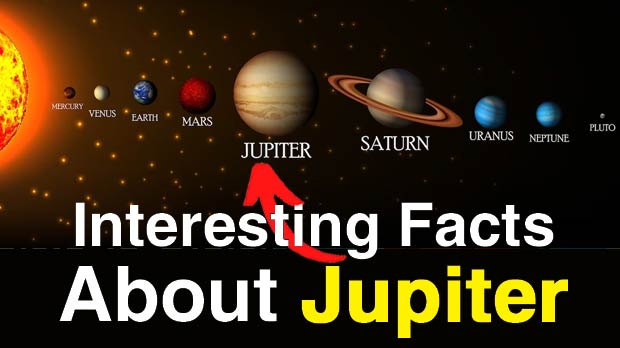Jupiter is a planet in our solar system, and it is the largest planet in the solar system. It is the fifth planet from the sun, and it is a gas giant, meaning that it is primarily composed of gas rather than a solid surface like Earth. Jupiter has a diameter of about 139,822 kilometers, which is more than 11 times the diameter of Earth. It is known for its iconic Great Red Spot, a massive storm that has been raging for at least 400 years. Jupiter has a strong magnetic field and is surrounded by a system of rings, although they are not as prominent as Saturn's rings. Jupiter also has a large number of moons, with 79 known moons as of 2021. It has been explored by several spacecraft, including Pioneer 10 and 11, Voyager 1 and 2, Galileo, and Juno.
Top 13 Facts About Jupiter Planet
1. Jupiter is the fifth planet from the sun and is located in the outer region of the solar system. It takes about 12 Earth years to complete one orbit around the sun.
2. Jupiter has a diameter of 139,822 kilometers, which is more than 11 times the diameter of Earth.
3. Jupiter is known for its iconic Great Red Spot, a massive storm that has been raging for at least 400 years. It is larger than the size of Earth.
4. Jupiter is primarily composed of gas and does not have a solid surface like Earth.
5. Jupiter has 79 known moons, with the four largest being Io, Europa, Ganymede, and Callisto.
6. Jupiter's gravity is so strong that it has the ability to capture asteroids and comets in its orbit.
7. Jupiter has the shortest day of all the planets in the solar system. One day on Jupiter lasts only about 9 hours and 56 minutes.
8. Jupiter has a very strong magnetic field, which is about 20,000 times stronger than Earth's.
9. Jupiter has been visited by several spacecraft, including Pioneer 10 and 11, Voyager 1 and 2, Galileo, and Juno.
10. Jupiter is a gas giant planet, which means that it is primarily composed of gas, mainly hydrogen and helium, and does not have a solid surface like Earth.
11. Jupiter's atmosphere is composed of bands of clouds that are mostly made up of ammonia crystals, sulfur, and other elements.
12. Jupiter has a very large and faint ring system, which was discovered by the Voyager 1 spacecraft in 1979.
13. Jupiter has been visited by several spacecraft, including Pioneer 10 and 11, Voyager 1 and 2, Galileo, and Juno. These missions have helped scientists learn more about Jupiter's atmosphere, magnetic field, and moons.
What is Jupiter made of
Jupiter is a gas giant planet, meaning that it is primarily composed of gas rather than a solid surface like Earth. The atmosphere of Jupiter is mainly composed of hydrogen gas, which makes up about 75% of its total mass, and helium gas, which makes up about 24% of its total mass.
In addition to hydrogen and helium, Jupiter's atmosphere also contains small amounts of methane, ammonia, water vapor, and other compounds. The upper atmosphere of Jupiter has clouds of ammonia crystals, which give the planet its distinctive bands of colors.
Below the atmosphere, scientists believe that there is a layer of liquid metallic hydrogen. This layer is believed to be so dense that it acts as a conductor of electricity, generating a strong magnetic field around the planet.
It is thought that Jupiter has a small rocky core at its center, but the exact composition and size of this core are still uncertain. Overall, the majority of Jupiter's mass is made up of hydrogen gas, and it is estimated that the planet is 90% hydrogen by mass.
Who Discovered Jupiter Planet?
Jupiter is one of the five planets that can be seen with the naked eye from Earth, and it has been known since ancient times. The earliest recorded observations of Jupiter were made by Babylonian astronomers in the 7th or 8th century BC, and it was also observed by ancient Greek astronomers such as Aristotle and Ptolemy.
However, the first telescopic observations of Jupiter were made by Italian astronomer Galileo Galilei in 1610. Using a telescope that he had designed himself, Galileo was able to observe the four largest moons of Jupiter, now known as the Galilean moons: Io, Europa, Ganymede, and Callisto. This discovery was significant because it provided evidence that not all celestial objects orbited around the Earth, as was commonly believed at the time.
Galileo's observations of Jupiter also allowed him to discover the planet's banded atmosphere and its Great Red Spot, a massive storm that has been raging for at least 400 years.











0 Comments